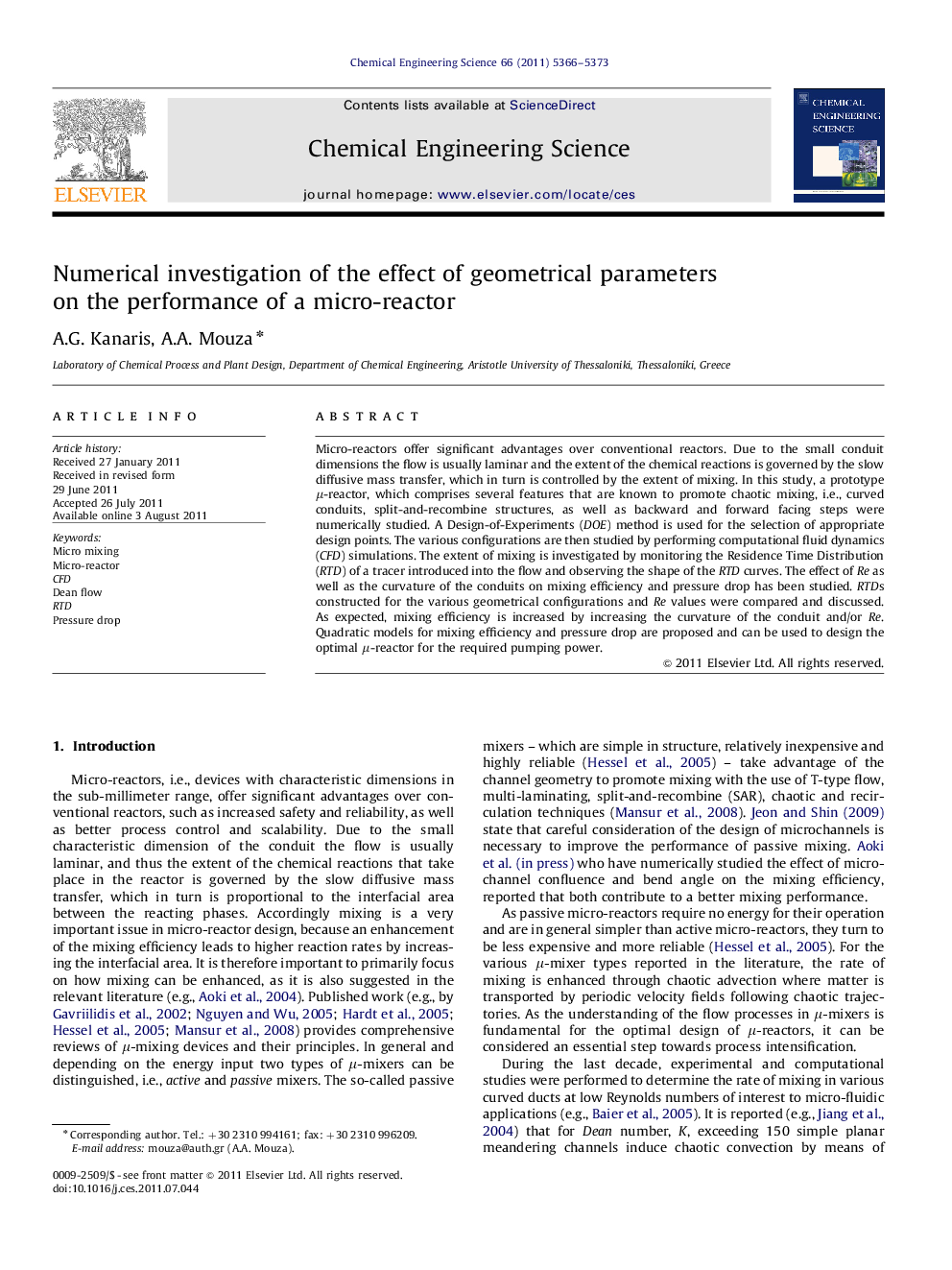| Article ID | Journal | Published Year | Pages | File Type |
|---|---|---|---|---|
| 156222 | Chemical Engineering Science | 2011 | 8 Pages |
Micro-reactors offer significant advantages over conventional reactors. Due to the small conduit dimensions the flow is usually laminar and the extent of the chemical reactions is governed by the slow diffusive mass transfer, which in turn is controlled by the extent of mixing. In this study, a prototype μ-reactor, which comprises several features that are known to promote chaotic mixing, i.e., curved conduits, split-and-recombine structures, as well as backward and forward facing steps were numerically studied. A Design-of-Experiments (DOE) method is used for the selection of appropriate design points. The various configurations are then studied by performing computational fluid dynamics (CFD) simulations. The extent of mixing is investigated by monitoring the Residence Time Distribution (RTD) of a tracer introduced into the flow and observing the shape of the RTD curves. The effect of Re as well as the curvature of the conduits on mixing efficiency and pressure drop has been studied. RTDs constructed for the various geometrical configurations and Re values were compared and discussed. As expected, mixing efficiency is increased by increasing the curvature of the conduit and/or Re. Quadratic models for mixing efficiency and pressure drop are proposed and can be used to design the optimal μ-reactor for the required pumping power.
► A prototype μ-reactor comprising mixing promoting features was numerically studied. ► The appropriate design points are selected using a DOE method. ► Various configurations are studied by performing CFD simulations. ► The extent of mixing is investigated by monitoring the RTD curves of a tracer. ► Quadratic models for mixing efficiency and pressure drop are proposed.
